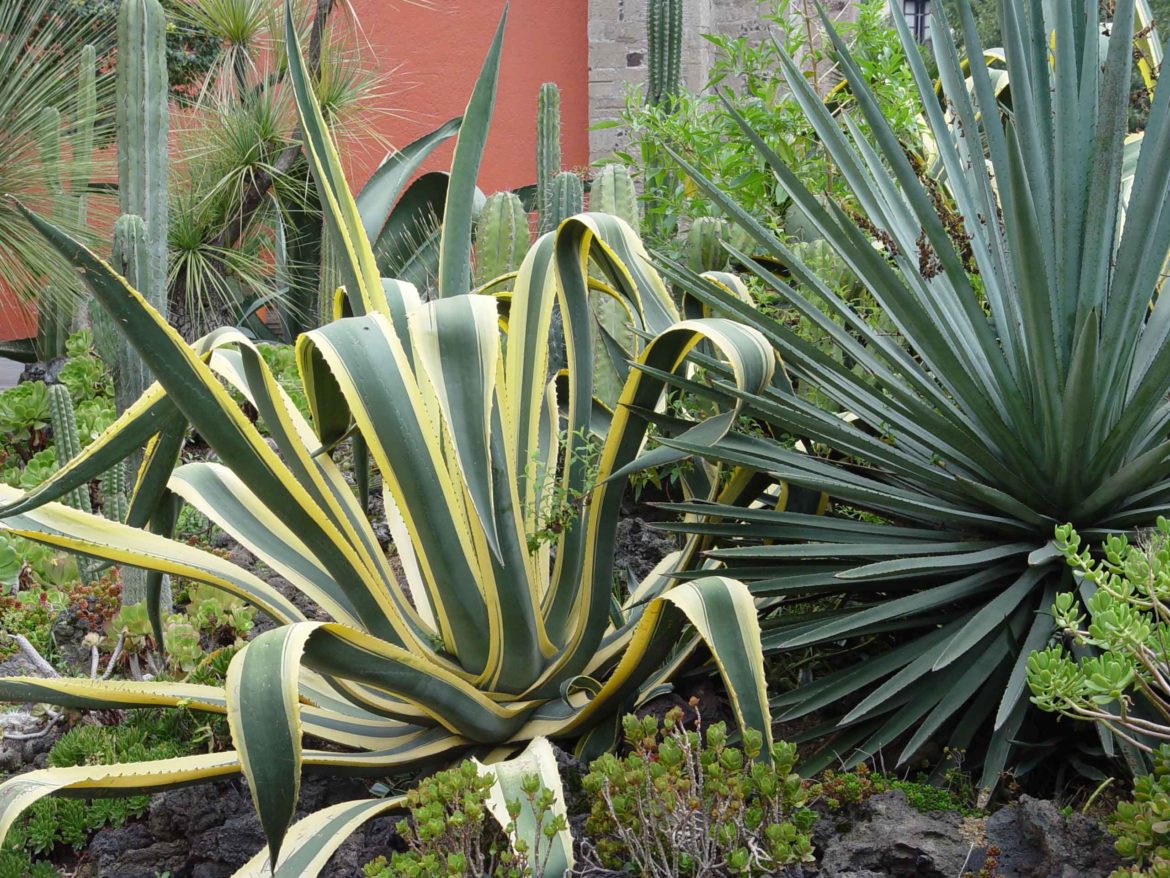Agaves and Aloes can make bold accent plants in a desert landscape; they both have an intriguing range of shapes, sizes, and colors. Many people become confused about what an agave is and what an aloe is, I hope I can clear this up for you in this article.
Agaves have large leaves arranged in a spiral, forming a rosette. The leaves can range from solid gray to green with yellow stripes. Depending on the agave, there will be teeth along the edge of the leaves or a sharp point on the end of the leaf. Water and energy storage is in its leaves, so it is important to retain the leaves for as long as possible. There are three leaf stages: bud, juvenile leaves, and mature leaves (which can live for 12-15 years). Since leaves are held in bud for a long time (2-3 years), as the plant grows you will be able to see imprints of the teeth on the surface of the leaf next to it. This is known as a “bud imprint” and adds to the character of the agave as it grows.
Aloe leaves are thick and glossy and range from dark green to nearly white. Aloes do not have sharp teeth along their leaves, nor do they have a sharp point at the end of their leaves.
Most agave species are monocarpic (blooming once in the life of the plant); very few agaves will bloom repeatedly throughout their lifetime. Once an agave starts to send up a stock (bloom) from the center of the rosette, it may take several months for it to bloom. An agave stock can grow as tall as 40 feet. After the flowering, the agave will die. However, some agaves do flower from the axils of the leaves, not from the center rosette, and these agaves will continue to live after the bloom. On the other hand, aloes bloom on a continuous basis and do not die. The bloom color ranges of an aloe are red, orange, pink, and yellow.
Both agaves and aloes produce rhizomatous offsets (pups). For the agave, these pups are what allow the plant to continue its life cycle. You will find them surrounding the “mother plant.” You can remove these pups at any time and transplant them. I recommend that you allow some to remain so that when the agave decides to send up a stock, these pups can take the place of the mother plant when she dies. Aloe pups can be pulled and transplanted at any time also. Both the agave and the aloe are one of the easiest plants to transplant.
Aloes are not susceptible to any pests or diseases, but they can get root rot if they are overwatered. Agaves are a little more temperamental. They too can get root rot if overwatered, but they have a specific pest…the Agave Snout Weevil. These weevils lay eggs inside the bud without you being able to notice it. Once you see wilting and death of the leaves appear, leaving only the bud, the agave is gone. This literally happens overnight. There is no cure or chemical to kill the weevil. It is recommended that you remove the infected agave immediately in order to prevent contamination of other agaves.
Both agaves and aloes require well drained soil. They are also water-wise plants. It is recommended to water them every one to two weeks in the summer and sparingly over the winter. They are perfect for pots and containers. If you feel you do not have a green thumb, these two plants will have you putting on your happy face.


